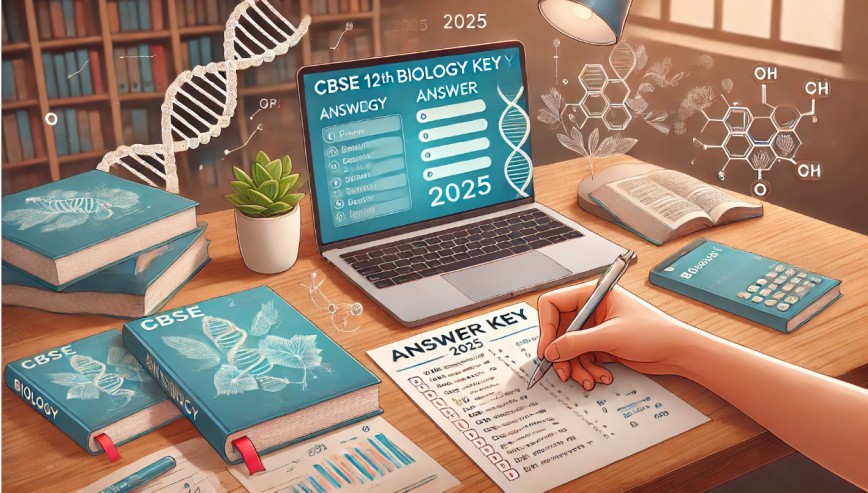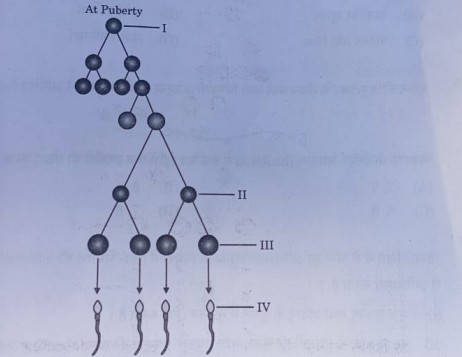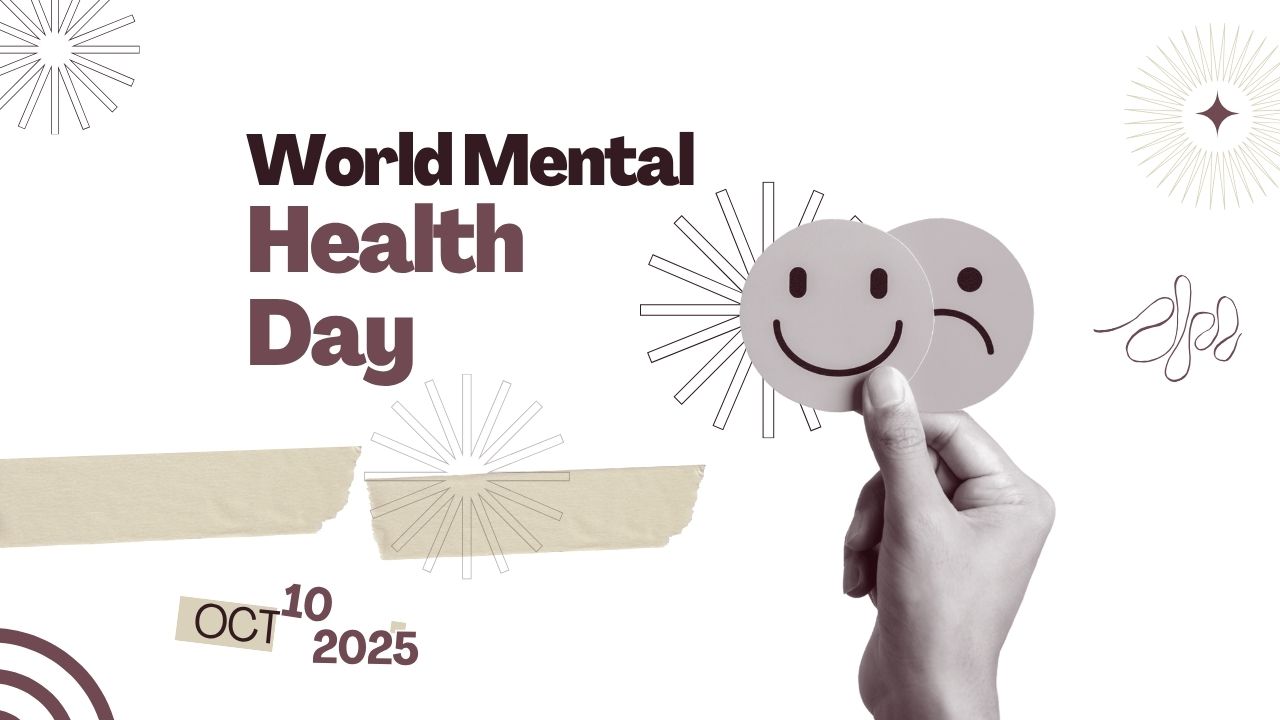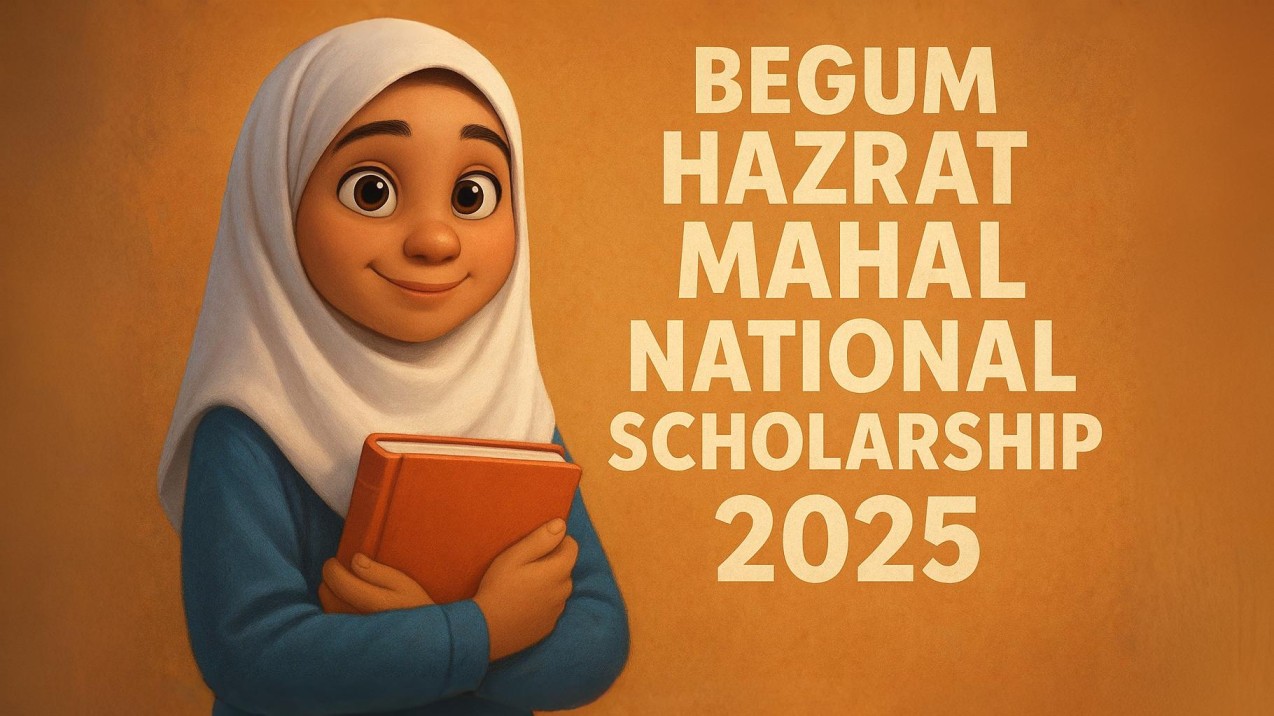Loading advertisement...
26-03-2025

CBSE Class 12 Biology Answer Key 2025 – Download All SETs PDF
The CBSE Class 12 Biology exam is one of the most crucial tests for students aiming for careers in medical and life sciences. If you have just appeared for the 2025 CBSE Biology exam and are eager to check your answers, you’re in the right place! This blog provides the CBSE Class 12 Biology Answer Key 2025 for all paper codes, along with a detailed solution analysis.
CBSE Class 12 Biology Exam 2025: Difficulty Level & Analysis
Overall Difficulty Level: Moderate
The paper was structured to assess conceptual clarity, application skills, and critical thinking. Based on student feedback and expert reviews, the difficulty level was categorized as:
✅ Easy: 35-40% of questions
🤔 Moderate: 40-45% of questions
😓 Challenging: 15-20% of questions
CBSE Class 12 Biology Exam 2025: Student & Teacher Reactions
Students had mixed reactions to the CBSE Class 12 Biology Exam 2025:
✔ "The paper was mostly from NCERT, so it was manageable."
✔ "Some case-based questions were tricky, but the rest was easy."
✔ "The time was sufficient, but Section C had some confusing questions."
Most students found the diagram-based and assertion-reasoning questions simple, while some struggled with application-based questions.
🎙️ Teacher Reactions
Teachers analyzed the paper and shared their expert opinions:
🧑🏫 "The paper was well-balanced, with a mix of easy and moderate-level questions."
🧑🏫 "Students who studied NCERT thoroughly should score well."
🧑🏫 "Application-based questions were slightly tricky, testing conceptual understanding."
Overall, the exam was fair, with no out-of-syllabus surprises. Teachers believe that students who prepared well should score 80+ easily.
The Question paper for all sets will help you evaluate your performance, estimate your score, and understand the correct answers. Below, you can find the PDF download links for each set:
| Set | Link |
|---|---|
| Set 1 | Update soon |
| Set 2 | Update soon |
| Set 3 | Update soon |
| Set 4 | Update soon |
| Question | Answer |
|---|---|
1. Some flowers are unisexual, this property of unisexuality of flowers prevents which kind of pollination? | (A) Both Autogamy and Geitonogamy |
2. Given below is the schematic representation of spermatogenesis in human males:  Choose the option that shows the correct labelling of ‘I’, ‘II’, ‘III’ and ‘IV’ in the given diagram. (A) I - Spermatogonia, II - Spermatid, III - Sec. Spermatocyte, IV - Spermatogonia | (D) I - Spermatogonia, II - Sec. Spermatocyte, III - Spermatid, IV - Spermatozoa |
3. Which one of the following options shows the correct evolutionary order of the plants mentioned below? (i) Fern (A) (iii), (i), (ii), (iv) | (A) (iii), (i), (ii), (iv) |
4. In molecular biology, who proposed that genetic information flows in one direction? (A) Har Gobind Khorana | (B) Francis Crick |
5. Given below is a heterogeneous RNA formed during Eukaryotic transcription:  How many introns and exons respectively are present in the hnRNA? (A) 7, 7 | (D) 7, 8 |
6. Which of the following features correctly shows the mechanism of sex-determination in honey bees? (i) A zygote formed from the union of a sperm and an egg develops into a male. Choose the correct option: (A) (i) and (ii) | (B) (ii) and (iii) |
7. Study the items of Column-I and those of Column-II:  Choose the option that correctly matches the items of Column-I with those of Column-II: (A) (a) (ii), (b) (iii), (c) (i) | (B) (a) (i), (b) (iii), (c) (ii) |
8. A child with blood group A has a father with blood group B and the mother with blood group AB. Choose the option that gives the correct genotypes of father, mother, and the child:  | (C) |
9. The decrease in the T-Lymphocytes count in human blood will finally result in (A) decrease in antigens | (B) decrease in antibodies |
10. If Meselson and Stahl’s experiment is continued for 80 minutes (till III generation), then what would be the ratio of DNA containing N¹⁵/N¹⁵ : N¹⁵/N¹⁴: N¹⁴/N¹⁴ in the medium? (A) 1:1:0 | (B) 0:1:3 |
(A) The polymerase enzyme joins the gene of interest and the vector | (D) Plasmid DNA acts as a vector to transfer the piece of DNA attached to it |
12. For commercial and industrial production of citric acid, which one of the following microbes is used? (A) Aspergillus niger | A) Aspergillus niger |
13. Assertion (A): Corpus luteum secretes the hormone, progesterone. | (A) Both (A) and (R) are true and (R) is the correct explanation of (A). |
14. Assertion (A): The number of white-winged moths decreased after industrialization in England. | (C) (A) is true, but (R) is false. |
15. Assertion (A): Streptococcus pneumoniae and Haemophilus influenzae are responsible for causing infectious diseases in human beings. | (A) Both (A) and (R) are true and (R) is the correct explanation of (A). |
16. Assertion (A): Restriction endonuclease recognizes palindromic sequence in DNA and cuts them. Reason (R): Palindromic sequence has two unique recognition sites PstI and PvuI recognized by restriction endonuclease. | (C) (A) is true, but (R) is false. |
| Question | Answer |
|---|---|
17. Student to attempt either option (A) or (B). (A) Comment upon the mode of pollination in Vallisneria and Zostera. OR (B) Mention any four strategies adopted by flowering plants to prevent self-pollination.
| (A) Pollination in Vallisneria and Zostera: Vallisneria follows hydrophily (water pollination) where the male flowers are released into the water and float to reach the female flowers. Zostera also exhibits hydrophily, but its pollen grains are long, ribbon-like, and carried by water currents. (B) Four strategies to prevent self-pollination: Dichogamy: Stigma and anther mature at different times. Herkogamy: Structural barriers prevent pollen from landing on the same flower’s stigma. Self-incompatibility: Genetic mechanisms prevent self-pollen from fertilizing the ovule. Unisexuality (Dioecy): Male and female flowers are on separate plants. |
18. Study the given pedigree chart in which neither of the parents shows the trait, but the trait is present in both male and female children.  Answer the following questions:(a) Write about the trait, also explain the inheritance of such trait in the progeny on the basis of the given pedigree chart. (b) Give one example of such trait in human beings. | (a) Explanation of the Trait and Inheritance: The given pedigree chart suggests an autosomal recessive inheritance, where both parents are carriers (heterozygous) but do not express the trait. The affected children receive one recessive allele from each parent (homozygous recessive), leading to the expression of the trait. This follows Mendel’s law of segregation, where 25% of offspring are affected when two carrier parents mate. (b) Example of such trait in humans: Sickle Cell Anemia Cystic Fibrosis Albinism |
19. Student to attempt either option (A) or (B). (A) Describe any two situations where a medical doctor would recommend injection of a pre-formed antibodies (antitoxins) into the body of a patient. OR (B) The symptoms of malaria do not appear immediately after the entry of sporozoites into the human body when bitten by female Anopheles mosquito. Explain why it happens. | (A) Two situations where pre-formed antibodies (antitoxins) are recommended: Tetanus Infection: If a person has a deep wound and is at risk of Clostridium tetani infection, tetanus antitoxin is administered to neutralize the toxins. Snakebite: A person bitten by a venomous snake receives anti-venom, which consists of pre-formed antibodies against the snake's venom. (B) Why malaria symptoms do not appear immediately after infection: When a female Anopheles mosquito bites, it injects sporozoites into the bloodstream. These sporozoites travel to the liver, where they undergo asexual multiplication (schizogony) inside liver cells. After 5-7 days, merozoites are released into the bloodstream, invading red blood cells (RBCs). The destruction of RBCs and release of toxins cause fever, chills, and sweating, which are the symptoms of malaria. |
The CBSE 12th Biology Answer Key 2025 provides students with a valuable opportunity to cross-check their responses and estimate their scores. By carefully analyzing the answers, students can identify their strengths and areas for improvement. While the official results will be announced later, this answer key serves as a reliable resource for self-evaluation. Stay updated with official CBSE notifications for any clarifications or updates. Best of luck with your results!
Also Check: CBSE Class 12th Chemistry Answer Key

